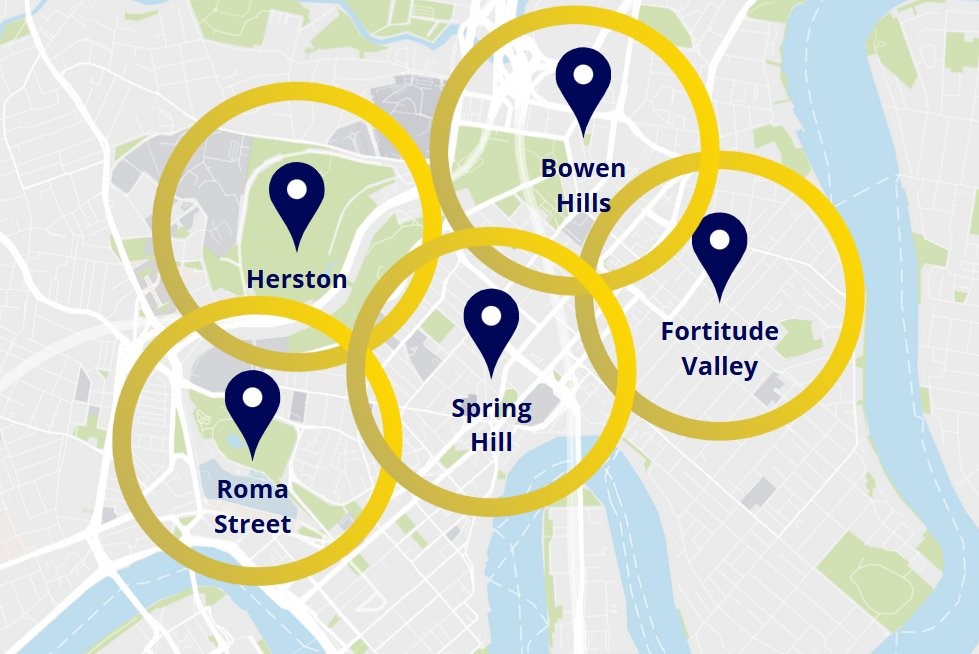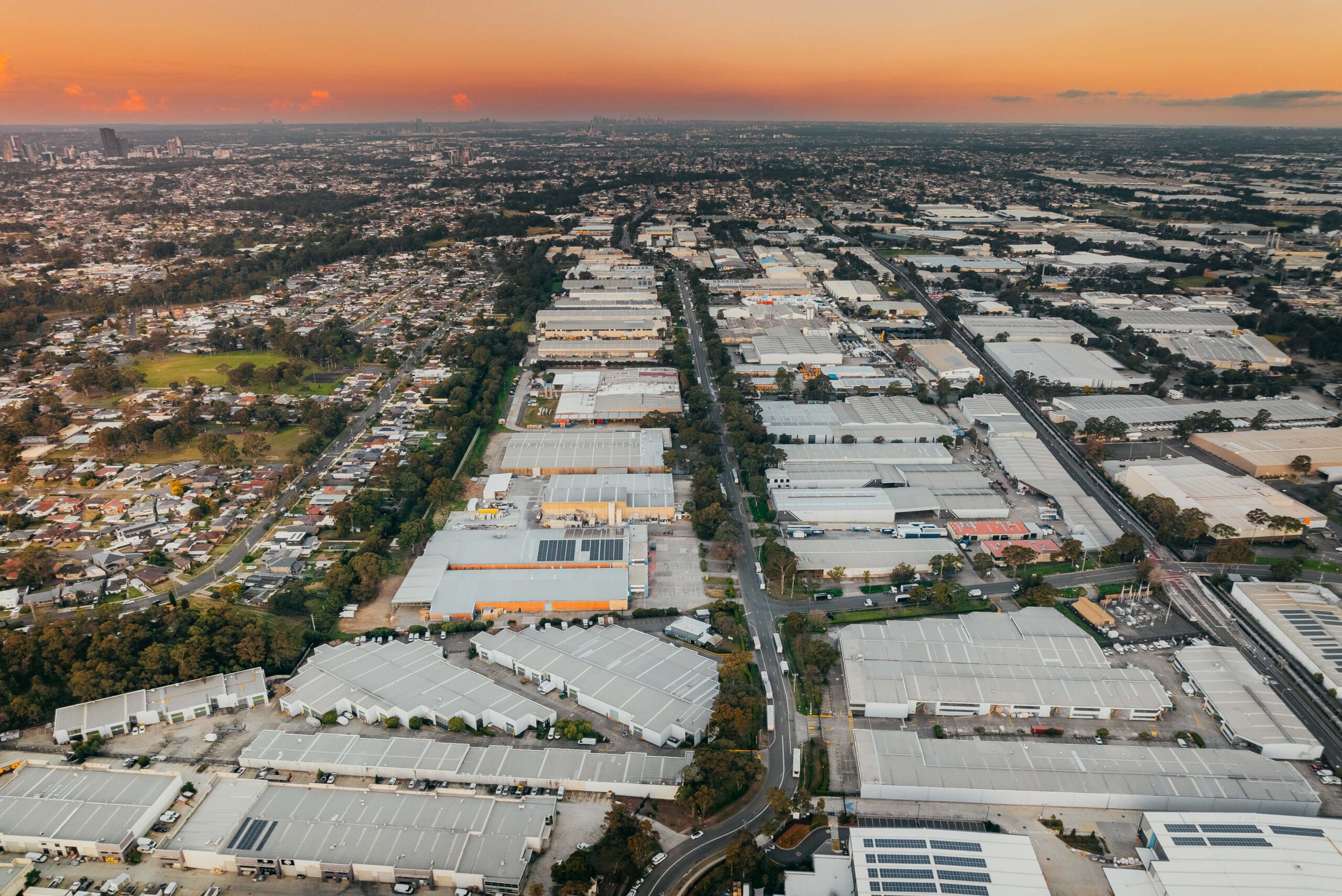‘Golden Rings’ of Opportunity: Olympic Investment Set to Ignite Inner-City Commercial Property Boom
15 May 2025
Olympic CBD infrastructure to unlock golden rings of opportunity across retail, residential, commercial and industrial sectors according to Colliers research
With just seven years to go, the Brisbane 2032 Olympic and Paralympic Games are already unlocking a decade of commercial growth and infrastructure transformation, with developers and investors expected to move quickly to capture long-term opportunities.
Central to this are the emerging ‘golden rings’ of opportunity – strategic rings connecting the new 63,000-seat Victoria Park Stadium in Herston, the Athletes’ Village in Bowen Hills, the National Aquatic Centre in Spring Hill and the surrounding precincts.
With its close proximity to the CBD, the precinct is set to become a dynamic mixed-use hub, integrating residential, commercial, and retail developments. This significant infrastructure investment will breathe new life into the golden ring areas of Fortitude Valley, Bowen Hills, Spring Hill, Roma Street and Herston – reshaping them into vibrant, high-density urban centres according to the new Colliers research report “Golden rings of opportunity: Olympic games to reignite Brisbane’s inner city” released today.
Key developments driving this transformation include:
Exhibition Station upgrade, funnelling increased foot traffic into Fortitude Valley and Bowen Hills.
Enhanced accessibility through upgraded Fortitude Valley Station and new pedestrian links to Victoria Park.
Retail growth corridors emerging along Anderson Street, St Pauls Terrace, Warry Street, and Gregory Terrace.
Revitalisation of Spring Hill, with Boundary Street to get a boost to be the heart of Spring Hill and Astor Terrace with the potential to evolve into a dining precinct.
Roma Street precinct upgrades, spurring demand for office and retail space through improved connectivity.
Strategic growth in Herston, supporting higher-density residential and medical-oriented commercial uses.
Industrial growth with demand for logistics, warehousing, and last-mile distribution centres, especially in key fringe areas where transport links are improving.
Colliers Queensland Chief Executive Simon Beirne said if we learned from previous Olympic cities as well as what we saw after the previous announcement that Woolloongabba would host the main stadium we would see a quick surge in investment and development.
“The Victoria Park precinct and surrounding suburbs are likely to see similar trends as investors position themselves ahead of major infrastructure rollouts. Rising demand for housing, retail, and office space will drive above average capital growth, making these precincts key hotspots for developers, investors, and businesses,” Simon Beirne said.
“The 2032 Olympics are set to be more than just a sporting spectacle, they’ll reshape Brisbane’s
inner city with world class infrastructure, better public transport, and an increase in investment.
“Areas like Herston, Spring Hill, Bowen Hills, Fortitude Valley, and Roma Street will feel the biggest impact, as limited space in the CBD pushes new commercial and residential projects into these growing precincts.
“These once overlooked areas will experience unprecedented activation, evolving into high density, highly connected urban hubs.
“There will be a significant amount of focus from the Government and Brisbane City Council on connecting the precincts and linking Victoria Park to Suncorp Stadium and South Bank, providing many further commercial opportunities.
“Brisbane’s industrial and commercial property markets will also see significant growth. The Games will drive demand for logistics, warehousing, and last-mile distribution centres, especially in key fringe areas where transport links are improving.
“The Games will leave a lasting mark, making Brisbane a more connected, liveable city with revitalised precincts and a more competitive property market for years to come,” Simon Beirne added.
Colliers Queensland Researcher Pragya Sharma said The 2032 Olympic and Paralympic Games were not only a landmark event for sport but also a powerful catalyst for creating pockets of growth across the surrounding precincts.
“What we’re seeing is a convergence of infrastructure, investment, and opportunity. The urban renewal unfolding now will position these precincts as key hotspots for developers, investors, and businesses into the future,” Pragya Sharma said.
“The Exhibition Station upgrade will see improved connectivity, funnelling increased foot traffic into Fortitude Valley and Bowen Hills creating prime opportunities for mixed-use developments along Anderson Street, St Pauls Terrace, Warry Street, and Gregory Terrace blending retail, commercial, and high-density residential projects.
“This is a long awaited opportunity for Bowen Hills which, despite having been declared a PDA some 17 years ago, has failed to capitalise on growth opportunities.
“Fortitude Valley’s ongoing urban renewal will gain further momentum, and the upgraded Fortitude Valley Station and new pedestrian crossings to Victoria Park will further improve accessibility, strengthening the area’s appeal.
“Spring Hill’s resurgence is also inevitable, Boundary Street will get a boost, as the heart of Spring Hill and Astor Terrace will benefit, as it has the ingredients for a dining precinct. This area is already seeing a shift, with cafes, boutique shops, and modern apartments emerging, and further infrastructure investment will only fuel this growth.
“Roma Street’s transformation will follow suit, as transport upgrades and improved pedestrian links elevate demand for office space and retail offerings, revitalising the area for both businesses and residents.
“As nearby Spring Hill undergoes revitalisation, the Roma Street office precinct will also benefit from the spillover effect, attracting new commercial activity.
“While Herston’s character homes may limit large-scale development, its proximity to Victoria Park and major hospitals will make it a natural location for higher density housing, short term accommodation, and commercial expansion,” Pragya Sharma added.
Colliers Queensland Associate Director Capital Markets Sam Arkell said what we could learn from previous Olympic games such as London, is that over 10 years since the London 2012 games, economic activity at the Queen Elizabeth Olympic Park is still ongoing.
“The Stratford precinct encompasses a thriving area of a 226-hectare park attracting six million visitors a year, world class sporting facilities, over 10,000 homes, and many new neighbourhoods under construction: amounting to over 55,000 people to be living on and around Queen Elizabeth Olympic Park by 2031.
“We can expect that astute developers will be looking for site opportunities within Brisbane Olympic precincts as early as possible in the lead up timeline to capitalise on the potential value that can be unlocked from these sites prior to the Games.
“The Cross River Rail and Brisbane Metro expansions will improve transport links to Victoria Park,
improving accessibility and making the area even more appealing to businesses and investors.
“Major sporting events offer unparalleled opportunities to put places on the map, accelerate their development and transform the value of commercial real estate assets,” Sam Arkell added.






